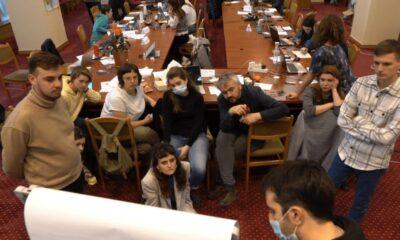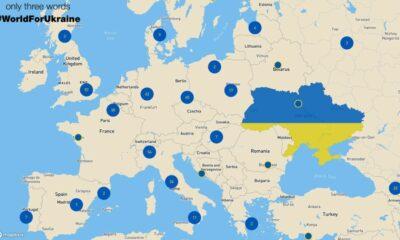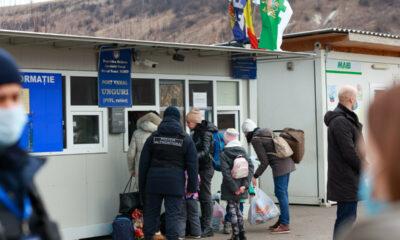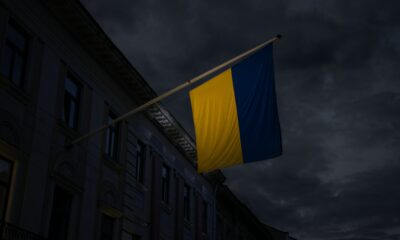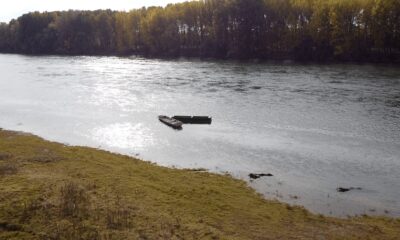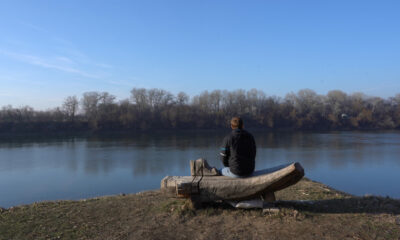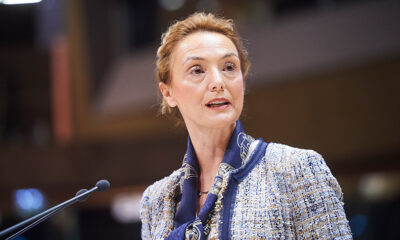Economy
Development Region Centre: creation process and prospects
Reading Time: 7 minutesAccording to the law on regional development, the Development Region Centre (DRC) consists of 13 districts: Anenii-Noi, Calarasi, Criuleni, Dubasari, Hancesti, Ialoveni, Nisporeni, Orhei, Rezina, Stra
According to the law on regional development, the Development Region Centre (DRC) consists of 13 districts: Anenii-Noi, Calarasi, Criuleni, Dubasari, Hancesti, Ialoveni, Nisporeni, Orhei, Rezina, Straseni, Soldanesti, Telenesti, and Ungheni. The DRC is located in the central part of the country and borders Romania in the west, the Development Region Transnistria in the east, the Development Region South in the south and the Development Region North in the north.
The DRC is the largest and most populated region of the country. It occupies 34.9% of the territory and is home to 30% of the Moldovan population. The share of the DRC’s industrial output is 15.3%, smaller that the share of the industrial production of the Development Region North, but larger than that of the Development Region South.
The Strategic Planning Group of the DRC was set up in mid-February with the support of the Ministry of Local Public Administration and the EU Project “Support to the Regional Development Implementing Bodies”. The Group is designed to ensure the participative framework for formulating the Regional Development Strategy (2007 -2013), which will be later taken over by the Centre Regional Development Agency and approved by the Regional Development Council. The main actors in the region participate in the Group’s activities: representatives of the local public administration, of the private sector and civil society.
Distinct features of the DRC
The DRC has a strategic geographic position for further development, because it is near the municipality of Chisinau, where it can benefit from different services that are not developed in the settlements of the region. At the same time, it can become a source for supplying the urban population of the capital with agricultural products. Also, Chisinau is a favourable environment providing the population of the region’s districts with employment and access to education.
The DRC is a crossing between other regions, owing to its favourable geographic position, fact that can stimulate the development of sectors such as hotel services, trade, trans-shipment points, transport and communications etc.
The specific features of the DRC as regards the human resources reside in the high rate of people able to work (76.7%). The DRC has sufficient labour force and a high percentage of able to work population. Most of the people work in agriculture and this affects the population’s standard of living because this sector brings the smallest income to the population at present. Labour force is needed to develop the services in different sectors (trade, industry, tourism etc.), but the people expect favourable conditions. The DRC has human resources, but these need professional training or re-qualification. The region offers possibilities of professional formation as there are 14 vocational schools and six colleges preparing teachers, doctors, specialists in agro-industry and constructions, specialists needed on the present labour market. The region’s population can take different professional training and re-qualification courses in the specialised institutions of the municipality of Chisinau. Yet, the municipality of Chisinau can attract skilled human resources as it offers better working and living conditions, better salaries than the rest of the region. To avoid this danger, the DRC can use the resources is has and the opportunities of creating working and living conditions for its residents comparable with those in Chisinau municipality. This can constitute an important stimulus for making the migrant citizens return to the motherland.
The phenomenon of migration has negative consequences on the development of the DRC, because the young population and the skilled workers are the first to migrate. The consequences of migration are evident particularly in the countryside, where the health and education institutions confront a shortage of personnel. As in the rest of the country, the natural growth rate of the population in the DRC is negative and this will determine the ageing of the population. Compared with the other regions, the DRC has the lowest urbanisation rate – 17%.
The favourable weather conditions, the aquatic resources that can be used for irrigation, the big areas of farmland and the fertility of the soil are the strong points that favour the development of agriculture in the DRC. The agricultural production per inhabitant is 148% compared with the average per country. Since the rural population of the region accounts for 83%, the modernisation and development of services in agriculture can ensure a high agricultural productivity and the agricultural products can be sold on the markets in Chisinau municipality or can be used as raw material by the processing plants of the region. The business environment in the rural zones can be developed by creating industrial services.
The DRC is characterized by a poorly developed industry. The industrial production rate per capita is 33% compared with the average per country and the investments in fixed capital make up 72%. The industrial enterprises are not developed because there is no functional industrial infrastructure, a strategy for promoting the local products on third markets; the products’ quality is not uniform and not permanently improved. The natural resources in the DRC (clay, sand, limestone) and the existent industrial infrastructure favour the development of the construction materials industry. This sector of the industry is developed in the region, but its production capacities do not satisfy the market demands, so the extension of the industrial services and their diversification can be a strategic development direction for the DRC.
The DRC has the largest tourism potential in the country. But not all the potential is realised at present. The richest forest fund, the different protected areas and scientific reservations of the region can be used as resources to develop tourism and leisure. The historical-cultural monuments of national importance (Orheiul Vechi, Saharna, Tapova, Japca, Donici etc.) can be used to initiate and develop the tourism services because the DRC has an underdeveloped respective infrastructure. The national monasteries, the handicraft, winemaking and winegrowing traditions represent a pole for attracting both national and foreign tourists.
The share of the homes equipped with aqueduct in the DRC is 34% compared with the national average of 37.5%, and with natural gas networks 44.7% as against the national average of 34.9%. The sewerage network in the DRC is poorly developed, though it has a larger share than the national average (22.6%). The DRC has a developed network of roads, but their quality is unsatisfactory; 85% of the road infrastructure is in need of repair. In such a way, the inadequately developed infrastructure is an impediment to the development of the industry and small business.
The education institutions in the DRC meet the necessities of the residents, except the preschool institution. The education establishments face difficulties in being supplied with the necessary teaching aids and equipment. The settlements of the DRC are confronted with a shortage of teachers, especially in rural areas. The vocational education institutions cannot meet the real market demands, as there is no coordination between the nomenclature of specialists and the market demands. The managers and teachers in residential institutions are conservative and sceptical as regards the implementation of alternative services to institutionalisation.
Weak points and advantages
Parascovia Munteanu, consultant of the EU Project “Support to the Regional Development Implementing Bodies”, considers that the examination of the socio-economic development of the DRC, the comparative advantages, strong points and opportunities determine an optimistic strategic orientation of the region. But this analysis should also take account of the weak points, which hinder the development of the DRC.
The problems that can defer regional development are related to the deficiency of workplaces, the high percentage of population working in agriculture (61%), the unfavourable business environment, the insufficiency of qualified human resources, the deplorable condition of the roads, the poor quality of the technical infrastructure, the poor diversification of the markets, the high level of corruption. These weak points can affect the development of the region and the efforts made by the residents to remove them must be in accordance with the regional development programmes and policies.
The regional development also envisages access to the European funds that aim to encourage and diversify the economic activities, to stimulate investments in the private sector, to contribute to lower unemployment rate and to improve the living standards of the population. The mentioned problems will not be solved if the foreign funds are not fully put to good use and the capacities of administering them are not improved. To avoid this risk, representative of the regional organisations that are to be set up have to strengthen the cooperation relations with different support programmes and funds and efficiently use the funds to which they have access.
On the basis of the analyses and studies carried out in the DRC, Iurie Costin, also consultant of the EU Project “Support to the Regional Development Implementing Bodies”, formulates the following comparative advantages of the region:
– Intermediation of the economic transport and commercial flows between the Moldovan and foreign regions;
– Rural development that envisages modernidation of agriculture, expansion of rural business, diversification of services in agriculture;
– Development of the industry and SMEs, meaning creation of conditions for opening SMEs, industrial development on the basis of the raw material found in the DRC, modernization of the industrial technologies, efficient utilization of the existent infrastructure;
– Creation and diversification of tourism and rest services. The tourism potential of the DRC can be used as important source in developing rural, cultural, recreational, fishing tourism;
– Utilization of the human resources. The DRC has the highest percentage of population able to work. The labour force is needed to create new services, modernize agriculture and industry require. In such a way, the preparation and re-qualification of the human resource is an objective for the DRC.
The regional development policy can be assessed from the angle of how the local and central public authorities use the existent resources, the instruments of the economic and financial policy with a view to stimulating investment, creating new workplaces ad improving the living conditions in the region.
Vision and strategic objectives of the DRC
Basing on these comparative advantages of the region, the Strategic Planning Group of the DRC had worked out the vision and strategic objectives of the DRC – components of the Regional Development Strategy. The vision represents the image of the region for the next 25 years, a long-term prospect that will cover the members of the community, the priority development policies and programs. According to the formulated vision, “the Development Region Center will become a prosperous region with a developed, dynamic and diversified economy, with well-paid jobs and an active involvement of the citizens in ensuring the well-being of the communities. The region will use the benefits it gains from being near the municipality of Chisinau, as multifunctional centre of the country, and the favourable geo-strategic position to develop an evident “logistic” function and of facilitating the interregional and international ties. The region will offer a decent living and working environment to the residents and hospitality to the visitors, while the human and cultural values and the care for the environment will constitute the foundation of the social cohesion of the community.”
On the bases of this development vision, the Strategic Planning Group set the strategic objectives:
– to economically develop and diversify the DRC in line with the dynamism of Chisinau and the market requirements;
– to develop the human resources in order to increase the employment rate;
– to develop the infrastructure and transport services in order to enable access to the European corridors;
– to improve the living conditions by protecting the environment and promoting the quality of the public utilities and services;
– to strengthen regional, interregional and international cooperation and partnership.
Each strategic objective has specific objectives that can be achieved by a number of measures that take into account the region’s potential. The Regional Development Strategy is still under formulation. Currently, the Strategy’s text is being finalised and there are collected ideas to draw up the Operational Development Plan, which will be based on the strategic objectives and the worked out measures and will constitute the Project Portfolio of the region for the next 3 years. // Info-Prim Neo
Economy
Moldova will receive a disbursement of 36 million euros as part of the the Economic Recovery Plan
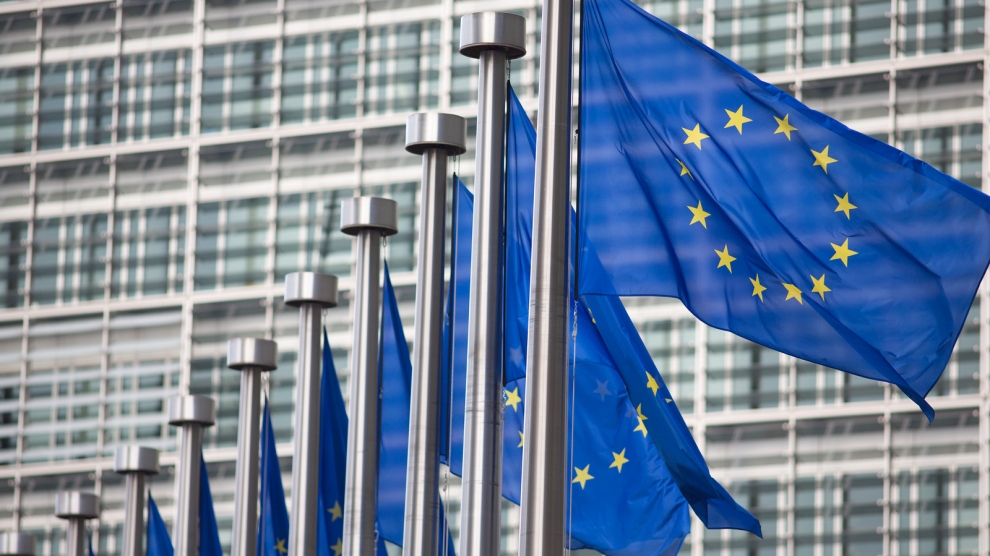
This week, the European Commission approved the disbursement of 36 million euros in grant money for the Republic of Moldova. The announcement was made by Deputy Director-General for Neighbourhood Policy and Enlargement Negotiations at the European Commission, Katarina Mathernova, who paid an official visit to the Republic of Moldova between September 13-15, together with Managing Director for Russia, Eastern Partnership, Central Asia, Regional cooperation and OSCE, at the European External Action Service, Michael Siebert.
The EU officials had meetings with President Maia Sandu, Minister of Foreign Affairs and European Integration, Nicu Popescu, Speaker of Parliament, Igor Grosu, Prime Minister of the country, Natalia Gavrilita, as well as key representatives of Government, international financial institutions and the civil society, according to a press release issued by the Delegation of the European Union to the Republic of Moldova.
Beside such topics as the EU-Moldova relations and prospects, the priorities of the reform agenda of the new Moldovan Government, preparations for the Eastern Partnership Summit at the end of the year and the Transnistrian conflict settlement, the officials also discussed the EU assistance in support of reforms and the Economic Recovery Plan for Moldova, which was announced in June with a total EU support of 600 million euros over the next 3 years.
“The first measures under the Economic Recovery Plan will shortly materialize, with the expected disbursement of 36 million euros in grant money under budget support programmes to support the authorities’ efforts to fight against the consequences of the pandemic. Moldova can count on EU’s assistance on its path to reforms and to recovery, bringing tangible results to citizens,” Katarina Mathernova stated.
The plan is based on assistance provided by the European Union through various bilateral and regional instruments, aiming to mobilize the funds in the form of grants, loans, guarantees and macro-financial assistance.
“The Economic Recovery Plan for the Republic of Moldova involves much more, not just this financial support provided immediately. It must help digital transformation, strengthen infrastructure, energy efficiency, education and support small and medium-sized enterprises,” the EU official also said.
As Prime Minister Natalia Gavrilita informed, “The Economic Recovery Plan and the 5 flagship initiatives for Moldova in the Eastern Partnership will directly contribute to the reform and consolidation of institutions, stimulate long-term socio-economic development, bring direct benefits to citizens, and unleash new economic opportunities through promoting the green agenda and digitization. Small and medium-sized enterprises (SMEs) have been hit hard by the crisis. Promoting and diversifying access to finance and reducing collateral requirements will be essential in supporting economic operators. We are grateful to the EU partners who will launch two programs to support 50 000 independent Moldovan SMEs to adapt to the new conditions.”
President of the Republic of Moldova, Maia Sandu, welcomed the decision of the European Union to disburse about 745 million lei in grant money, as the official page of the President’s Office announced. “EU support comes after a long period of freezing of European assistance, caused by former governments. We managed to relaunch the political dialogue with the European Union and resume financial assistance. The Republic of Moldova is gradually regaining the trust of its strategic partners. This European support is also a signal of encouragement for the new Government team in its commitment to clean up the institutions, fight corruption and launch development programs in the country,” said Maia Sandu.
Photo: unknown
Economy
Romania and Moldova signed a partnership memorandum pledging to cooperate in promoting their wines
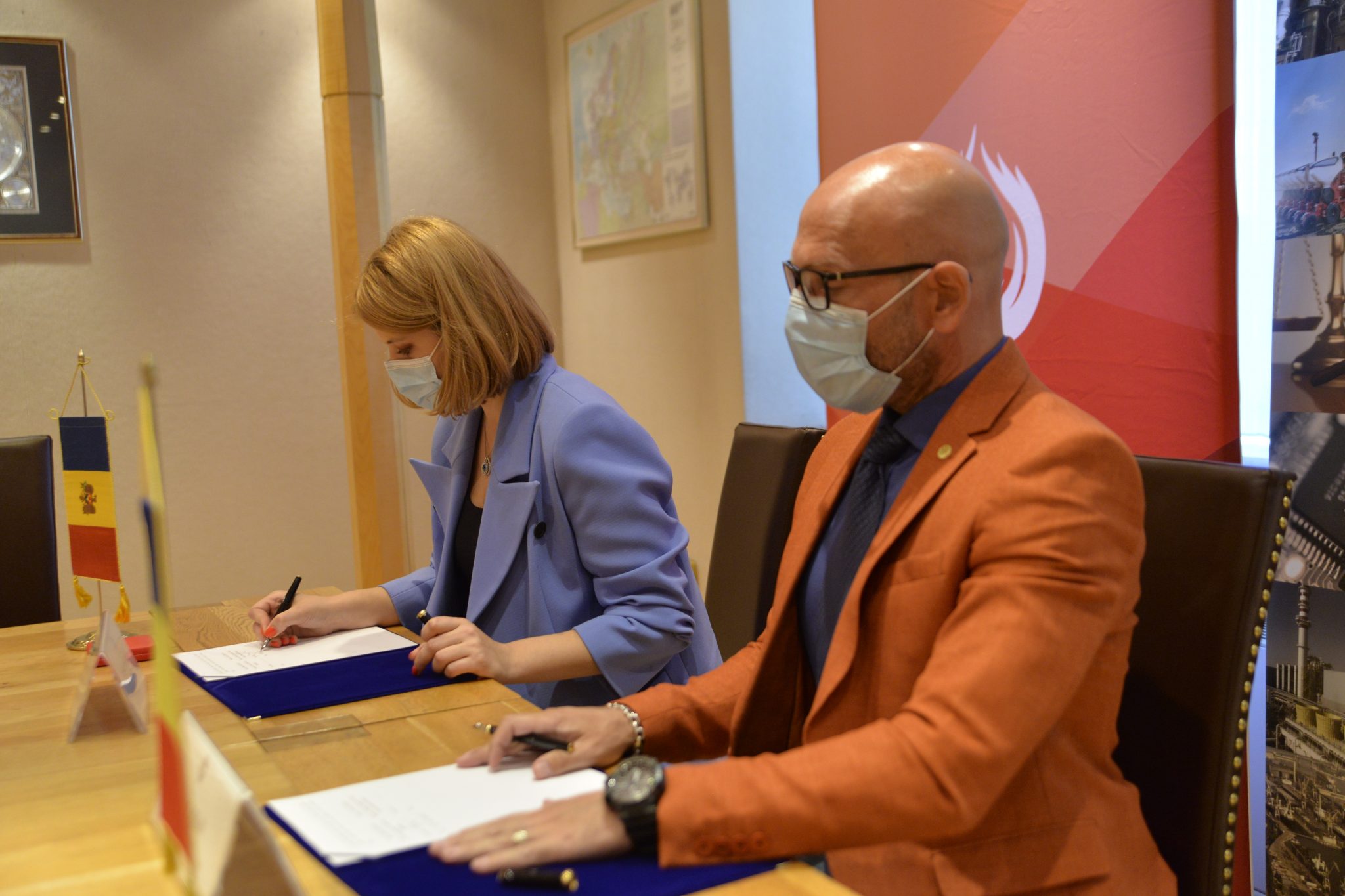
The Chamber of Commerce and Industry of Romania (CCIR) and the National Office for Vine and Wine (NOVW) of the Republic of Moldova signed, last week, a memorandum of cooperation on organizing joint promotional activities in the markets of common interest, as the CCIR announced.
China, Japan or the USA are just some of the markets targeted by the Romanian and Moldovan institutions. The memorandum also involves advertising activities for wines from common indigenous varieties, promoting the oeno-tourist region, developing a tourist route in the two states, exchange of experience, study visits, and mutual support in identifying new export opportunities. “We are very confident that this collaboration between our organizations will lead to sustainable economic growth and a higher degree of well-being among Moldovans and Romanians,” claimed Deputy Secretary-General of CCIR, Bogdan Visan.
On the other hand, Director of the NOVW, Cristina Frolov, declared that no open competition with Romania is aimed at the governmental level of the Republic of Moldova. “This request for collaboration is a consequence of the partnership principle. Romania imports 10-12% of the wine it consumes, and we want to take more from this import quota. Every year, the Romanian market grows by approximately 2.8%, as it happened in 2020, and we are interested in taking a maximum share of this percentage of imported wines without entering into direct competition with the Romanian producer,” the Moldovan official said. She also mentioned that Moldova aims at increasing the market share of wine production by at least 50% compared to 2020, and the number of producers present on the Romanian market – by at least 40%.
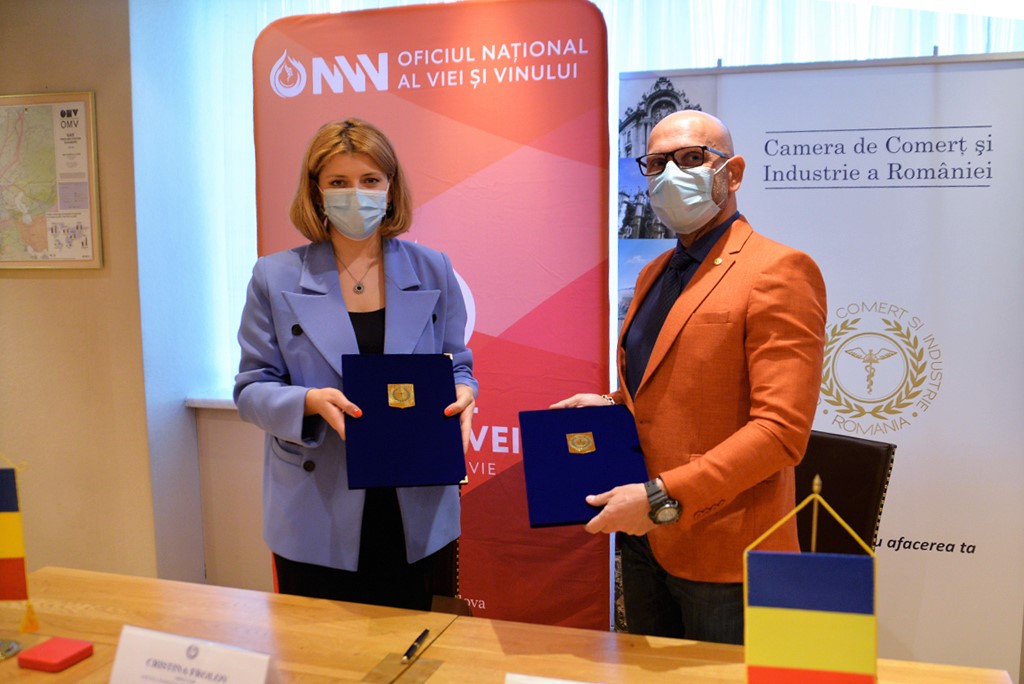
Source: ccir.ro
**
According to the data of the Romanian National Trade Register Office, the total value of Romania-Moldova trade was 1.7 billion euros at the end of last year and over 805 million euros at the end of May 2021. In July 2021, there were 6 522 companies from the Republic of Moldova in Romania, with a total capital value of 45.9 million euros.
The data of Moldova’s National Office of Vine and Wine showed that, in the first 7 months of 2021, the total quantity of bottled wine was about 27 million litres (registering an increase of 10% as compared to the same period last year), with a value of more than one billion lei, which is 32% more than the same period last year. Moldovan wines were awarded 956 medals at 32 international competitions in 2020.
Photo: ccir.ro
Economy
Moldova’s hope to be a top walnut exporter and its main difficulties
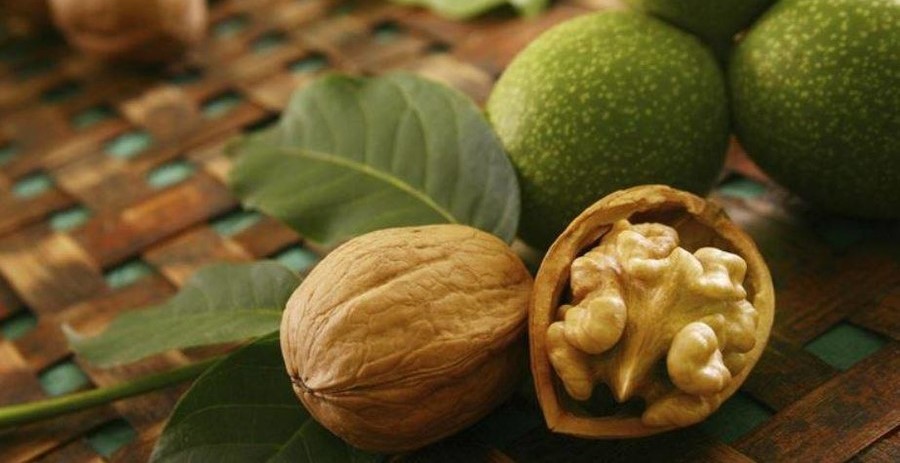
The Republic of Moldova has perfect weather conditions for growing walnut trees, that creating a great potential of walnut production and trade, especially on international markets, where the demand is way higher than the product’s supply. National and international experts believe that the country’s walnut production industry is on the verge of important transformations, which could lead to increased yields, quality and competitiveness worldwide.
According to authorities, Moldova exports 34-35 thousand tons of walnuts in shell, which is about 7% of the total export of fruit and 5% of the total export of horticultural products. The export value is assessed as being $120 million, that being 57-60% of the total fruit export value and about 50% of horticultural export value. Most of walnut crops are exported to the EU countries, such as France, Germany, the Netherlands, Romania and Austria. The country’s exports were among the world’s top 10 when it comes to the highest dollar value of the product during 2020.
Viorel Gherciu, Minister of Agriculture and Food Industry, pointed out that the production in the domestic walnut industry has increased by 55% in the last five years, which ranks Moldova among the main producers in the world.
“The biggest opportunity for this industry is that we are in the geographical proximity of the largest walnut import area in the world, which is the European Union, with almost 40% of total imports in the world. We are on the EU border, with privileged relations, with an Association Agreement. We already enjoy a good relationship in working with European importers, they trust our processors. A very close collaboration has been created and this is, in fact, the guarantee for those who invest in the area,” claimed the president of the Walnut Producers Association, Oleg Tirsina.
The data provided by the National Bureau of Statistics show that there are 34.7 thousand hectares of walnut plantations in the country. 20.90 hectares are represented by orchards. 75% of planted orchards are formed of old varieties trees. 30-35% of the exported production comes from orchards, the rest comes from individual farmers and plantations along the roads. This means that the quality of walnut production is not at its maximum potential. Developing commercial plantations through orchards modernization and extension of walnut varieties would provide double yield and better quality, experts say.
Governmental support in the form of subsidizing solutions, foreign investments and credit options are indispensable for the industry development. One of the financing options is the credit line of the European Investment Bank Project. Since 2016, 15 producers and processors of nuts, almonds and hazelnuts have benefited from these loans with the total amount of investments worth 8.7 million euros. A further extension of the project would provide another 60 million euros for the modernization of the horticultural sector in general and for harvesting organic walnuts in particular.
Photo: heymoldova.com


